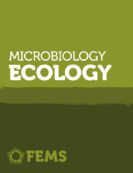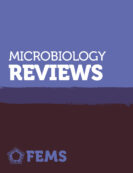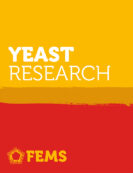FEMS Journals iPoster Prize: Sakeenah Hussain Naqvi
We send our congratulations to Sakeenah Hussain Naqvi (@SakeenahNaqvi), who won one of the iPoster Prizes at the World Microbe Forum, sponsored by the FEMS Journals.
Read our interview with Sakeenah Hussain about her research below:
What is your current position, and what was your scientific journey to get there?
I am currently working as Consultant Microbiologist, President Hospital Infection Control Committee & Head of the Pathology Laboratory at the Pakistan Aeronautical Complex Hospital Kamra in Pakistan since Dec 2013. Previously, I started my medical journey by doing Bachelor of Medicine and Bachelor of Surgery (MBBS) from Army Medical College Rawalpindi in Pakistan in Jan 2000. I then did a post-graduation fellowship degree in Medical Microbiology from College of Physicians and Surgeons Pakistan after 4 yrs training at Armed Forces Institute Of Pathology Rawalpindi, Pakistan. Later I worked for 3 years as a Consultant Microbiologist & In-charge Hospital Infection Control at Pakistan Air Force Hospital Islamabad, Pakistan. I then got an opportunity of on job training in clinical microbiology, mycology & hospital infection control from Freeman Hospital, Newcastle Upon Tyne Hospital Trust UK. Finally, I also worked for a year as an honorary Consultant Microbiologist and Hospital Infection Control Doctor at Shunyi District Hospital, Beijing, China.”
Could you describe the research your poster covered?
As per World Health Organization recommendations patients of COVID-19, requiring aerosol generating procedures must be managed in Airborne Infection Isolation Rooms (AIIR). However most of the healthcare facilities in resource poor countries lack the recommended mechanically engineered AIIR due to high initial/maintenance cost involved to create such facility. I have proposed a simple and cheap solution to the problem for low income countries like us. Also it can be used as a make shift arrangement in developed countries in case of pandemics spreading to the extent of COVID.
Wherever mechanically ventilated AIIR are not feasible due to cost constraints etc., any existing room can be converted into an AIIR with required Air Change Rate Per Hour (ACH) 12 or more as recommended by WHO for AIIR. It can be done simply if an exhaust fan with known ventilation rate calculated as per formula: Vent Rate (cfm) Exhaust = ACH X Room Volume (cft) / 60, is placed in the wall facing exterior of building without HEPA filter and air inlet is left in the door/window opening into the building corridor thus creating a negative pressure in the room as compared to corridor and making direction of air from corridor to exterior of the building. Thermal discomfort can be managed by placing an electric heater/ wall mounted fan at foot end of patient. This can also be practiced in the TB isolation wards/ rooms even in post COVID pandemic era“
What do you hope to focus your research on in the future?
Being member of a developing country, where infectious diseases flourish due to poor living standards and hospital infection control is in primitive stage except for few hospitals in big cities, I have always had my focus on sensitivity patterns of Salmonellae from blood Cultures and growth of MDR organisms like MRSAs & ESBL/MBL producers etc. from high risk areas in hospital and prevention of their spread. Prevention of spread of HCV/HBV and HIV from hospitals/clinics etc. by implementation of strict infection control measures has always been in my agenda and will be in future too.”
–
We use income from the FEMS Journals to fund grants, awards, and projects, and to support our knowledge sharing events and initiatives. Consider publishing your research with our journals to help the global microbiology community.
All but one of the FEMS journals are fully open access (OA), with one journal, FEMS Microbiology Letters, offering free-to-publish and OA options. Open access is key to supporting the FEMS mission of disseminating high quality research as widely as possible: when high quality, peer reviewed sound science is open access, anyone, anywhere in the world with an internet connection, can read it.








